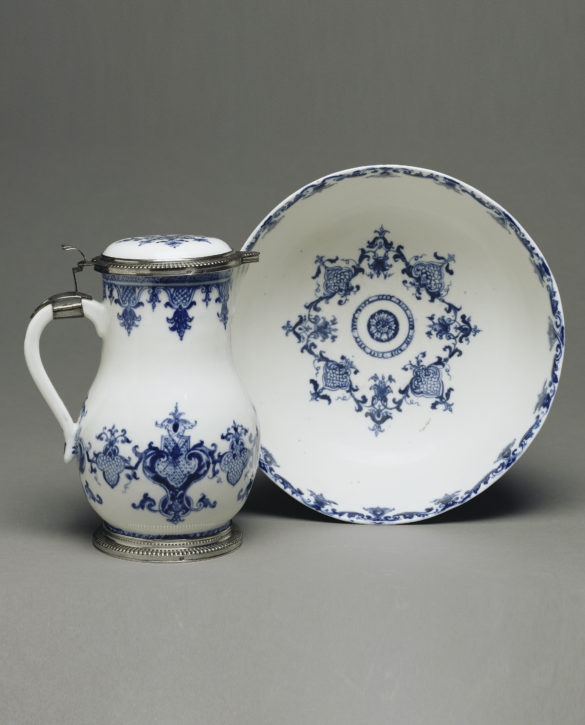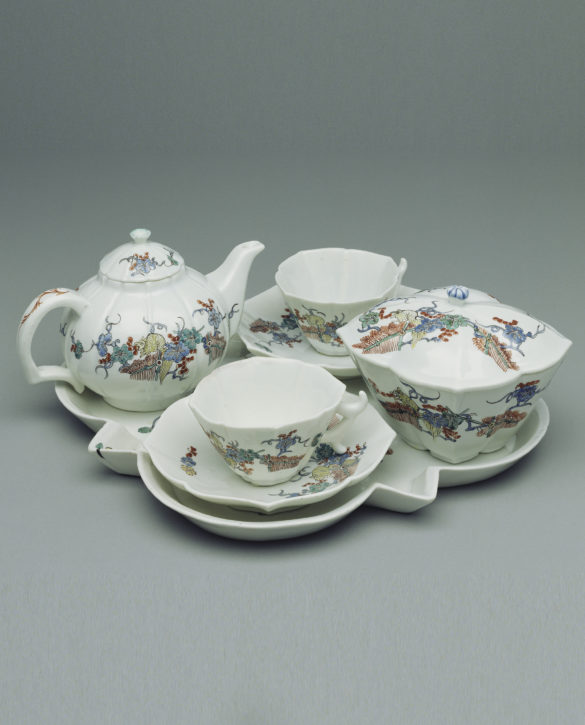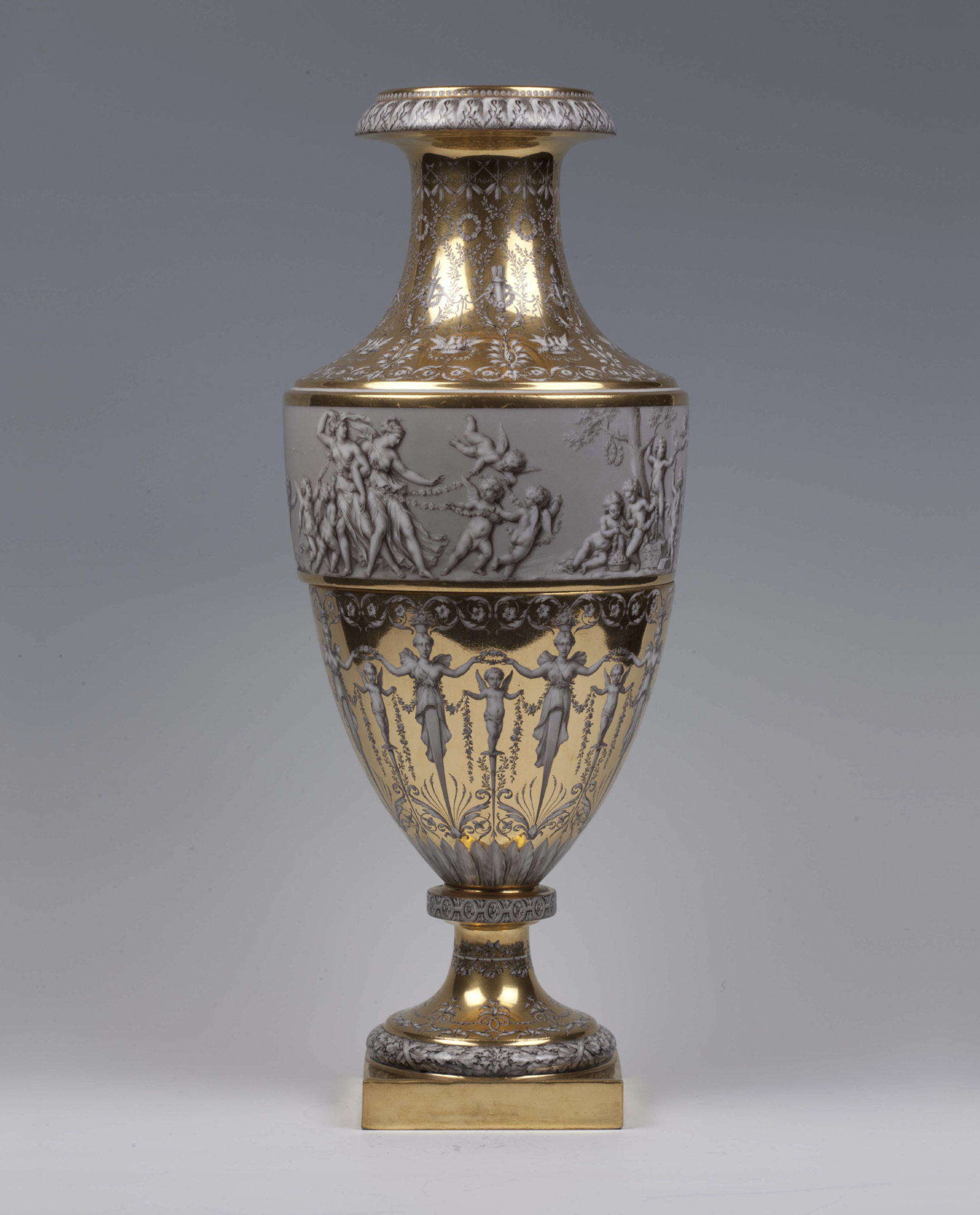SAINT-CLOUD
A faïence factory based at Saint-Cloud, west of Paris, was the first successful European manufacturer of an ‘artificial’ or soft-paste porcelain. In the 1660s Pierre Chicaneau (d. 1677), the factory’s owner, experimented with porcelain production. By 1693, Chicaneau’s sons had developed a commercial soft-paste porcelain from a white-firing clay fused with a glass frit (glass melted and ground to a powder). The result was a creamy white body which they covered with a lead glaze. The company received several royal privileges from Louis XIV protecting their invention from competitors. A retail outlet was established in Paris from about 1715. The factory survived until 1766.
Ewer and bason with silver mounts, Saint-Cloud, c.1720. (The J. Paul Getty Museum, Los Angeles, Inv. no. 88.DI.112)






